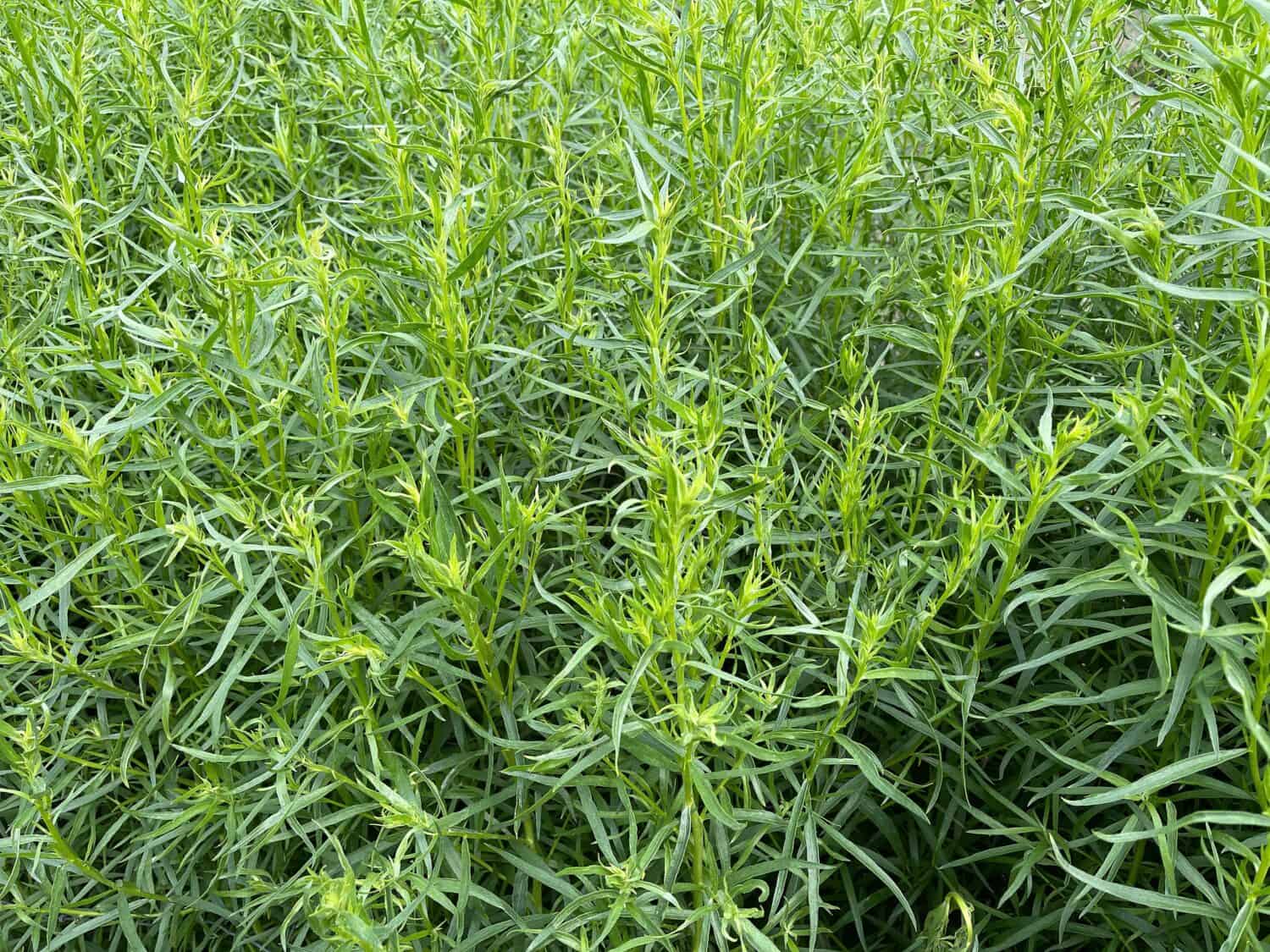16 Plants That Look Like Lavender And How to Care For Each
5. French Tarragon (Artemisia dracunculus)

©Manfred Ruckszio/Shutterstock.com
Another distinctive herb, French tarragon, exhibits captivating qualities that make it a unique addition to your garden. Its slender, lance-shaped leaves are a vibrant green and have a graceful, feathery appearance. While they may not resemble lavender’s broad, gray-green leaves as closely as some other specimens, French tarragon’s foliage exudes an elegance of its own.
What sets French tarragon apart is its delightful aroma—when you brush against its leaves, you are greeted with a sweet, anise-like fragrance. Specimens grow best in full sun where they receive at least six hours of sunlight daily.
They also love well-draining soil and do not tolerate waterlogged roots. However, keep the soil consistently moist. French tarragon appreciates regular watering, especially during dry spells. Regularly trim back the plant to encourage bushier growth.
Add French tarragon’s aromatic leaves to culinary dishes and harvest leaves as needed. In colder climates, consider providing winter protection such as mulch to shield the plant from freezing temperatures.
6. Hebe (Hebe x franciscana ‘Silver Queen’)

©Elena Rostunova/Shutterstock.com
Silver Queen hebe is an evergreen shrub known for its striking foliage that shares similarities with lavender in terms of color and texture. Its lance-shaped leaves are a cool grayish-blue hue, providing a visual contrast that echoes the soft, gray-green leaves of lavender.
This shrub forms a compact mound of foliage, making it an excellent choice for borders, hedges, or container planting. While hebe doesn’t produce traditional lavender-like blossoms, its foliage’s lavender-esque tones add a touch of elegance to your landscape.
Grow specimens in a location that receives full sun to partial shade, ensuring they get enough light for healthy growth. It also loves slightly acidic to neutral, well-draining soil. Additionally, keep the soil consistently moist, especially during dry spells. Regular watering supports its overall health.
Cut back hebe in the early spring to maintain its compact shape and remove any dead growth. Furthermore, apply a balanced, slow-release fertilizer in the spring to provide essential nutrients for optimal growth. In colder climates, consider protecting hebe from frost to ensure its survival.









